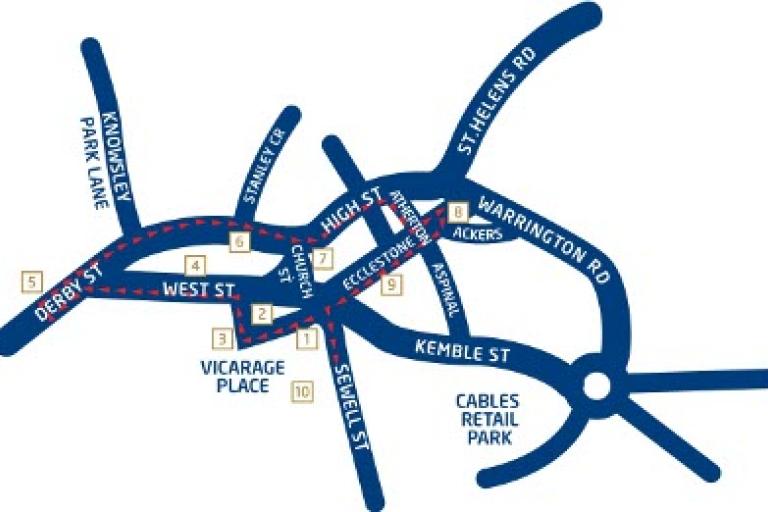Prescot
Prescot is one of the oldest towns in Merseyside, and it is believed that an early Christian church was established here in the 7th century. In medieval times Prescot was a thriving market town and the ecclesiastical centre of a large parish covering much of southwest Lancashire.
The 18th century brought considerable changes to Prescot, and the continued growth in several craft industries created one of the earliest centres of the Industrial Revolution. These craft industries were concentrated around watchmaking, tool making and the potteries, resulting in Prescot’s increased prosperity. The town also had close links with Liverpool’s expanding overseas trade and, as a result, became an important coaching centre on the Lancashire Turnpike System. As the old trades disappeared, other industries replaced them, and during the 20th century, BICC was a big local employer, utilising the highly skilled watch-making workforce. Prescot once had an unusual tradition known as the Perrying Ceremony. It involved the officers of the Court Leet throwing heated pennies from the windows of the Town Hall into the marketplace below. People would then scramble to pick them up. While walking the Prescot trail, look out for Stone Street, officially the narrowest named street in the country.

The route:
- St. Mary’s Church is the only Grade I listed building in the borough of Knowsley and dates predominantly from 1610. The church contains several items from earlier buildings, including a C15 vestry, intricate woodcarvings, panelling and an Anglo-Saxon font. The tower and spire, added in the late 1720s, are thought to be the work of a pupil of Sir Christopher Wren.
- Vicarage Place is a fine example of a Georgian street. Number 10 Vicarage Place dates from the early 18th century and has some attractive Victorian cast iron railings and gateposts. On the front of number 8 can be seen the Coat of Arms of King's College, Cambridge, originally on the Town Hall of 1755. In 1445, King Henry IV granted the Parish and Manor of Prescot to his newly established college in Cambridge.
- The church of Our Lady Immaculate and St. Joseph was built in 1856-7 and designed by the architect Joseph Hansom. Hansom became famous for inventing the ‘Hansom Cab’.
- West Street has dwellings of various dates, including an attractive Victorian terrace (nos. 12-20) and number 4, which still retains a watchmaker gallery at the rear.
- The Clock Face public house, Grade II listed, was originally called West End House. It was built in the late 18th century as a Dower House for the widow of the Earl of Derby.
- The Sun Inn dates from 1798 and is said to be the oldest public house in continuous occupation in Prescot. In the 1840s, it was a coaching inn, and for a short time, it was the Excise Office.
- Prescot Museum is a handsome brick Georgian townhouse dating from 1776, originally the site of the local cock fighting pit. During the 19th century, it became Parr’s Bank and later the National Westminster Bank before opening as a museum in 1982.
- In the late 19th century, the Prescot watch-making industry was collapsing, and in 1889, the Lancashire Watch Making Company was formed. They built a warehouse and specialist workshop known locally as the ‘Flatiron Building’, and various local watch-making companies were bought out and the workers employed here.
- Along Ecclestone Street is evidence of Medieval Prescot; of note is number 30. Interestingly, the right-hand gable is genuine 17th-century, and the left-hand side is a 20th-century copy. Some of the other shops, behind their modern frontages, have remains of 17th-century buildings.
- Prescot War Memorial, sculpted by Walter Gilbert and Louis Weingartner, shows a young army officer holding a gun, standing on top of the tall Portland stone pedestal. It is unusual because the date plaque shows that it was unveiled in 1916, two years before the First World War ended.